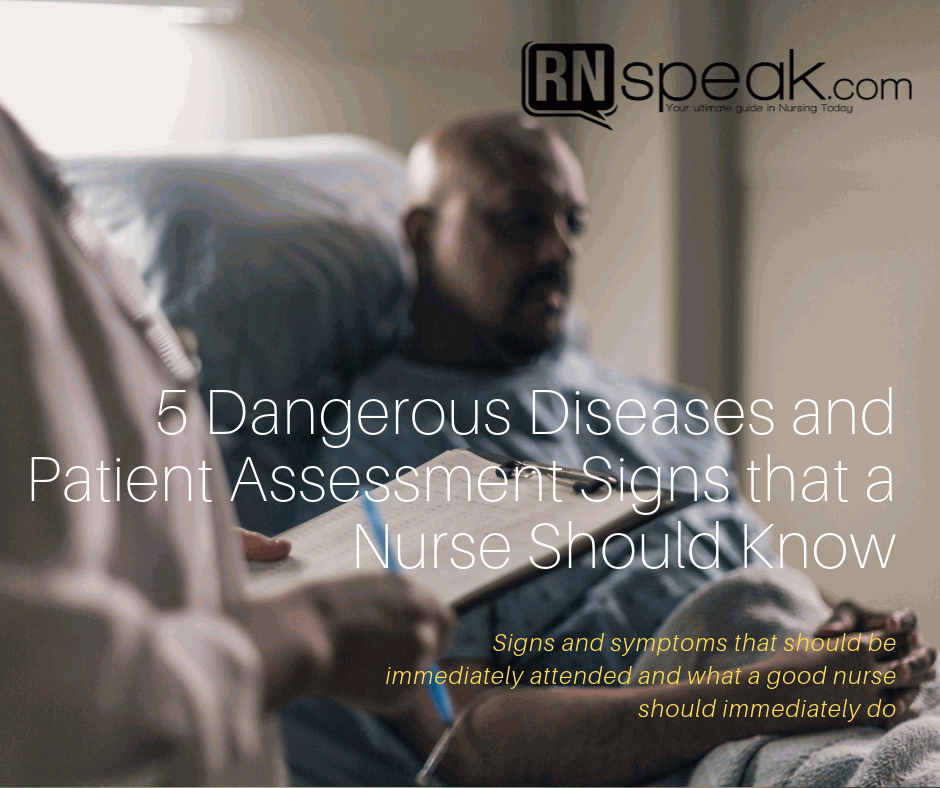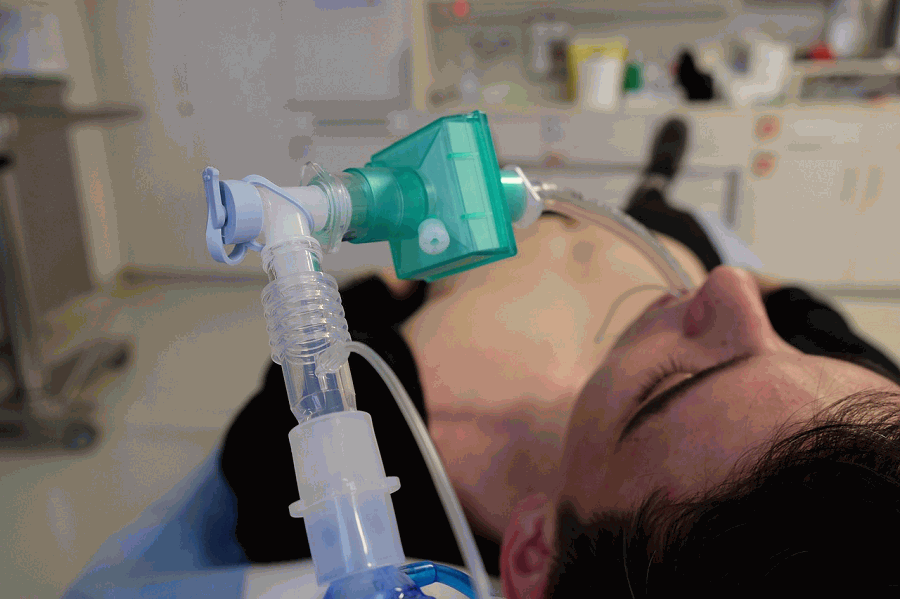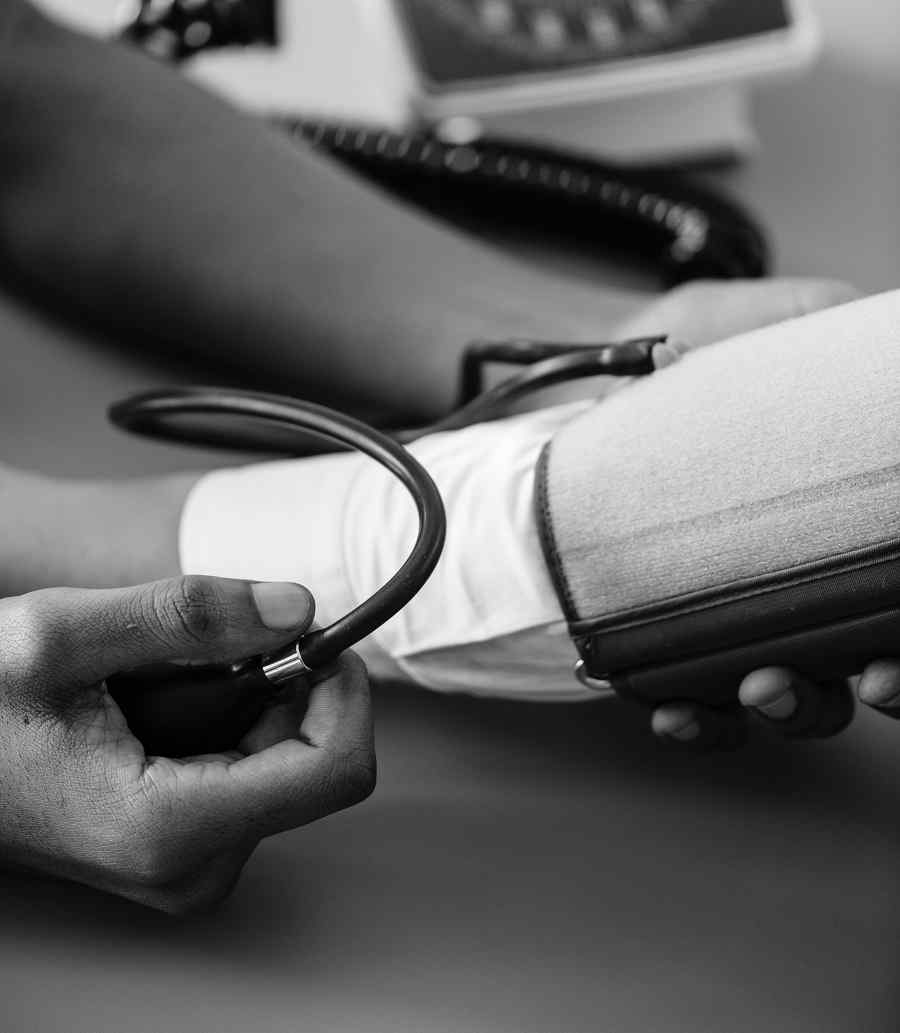
There are numerous dangerous patient assessment signs that a nurse should know by heart in order to save lives. But before identifying these symptoms, the nurse should know the underlying disease that causes the symptom. A very keen eye is needed in order to ensure the safety of a patient, slight mishap or worse negligence nor non-maleficence may cause death.
There is NO room for ERROR, though NURSING ERRORS are inevitable it can be prevented and removed totally when a nurse has the ability to expect, predict, report and intervene in a timely manner. In this article, we will enumerate 5 dangerous patient assessment signs that a nurse should know like a nurse know the alphabet. Let us also know the disease causes these symptoms. Let us take note of these diseases
1. Meningococcal Disease
The symptom of meningococcal disease is much similar to just common flu, and most of the time mistaken to be just FLU. The disease does not have any geographical barriers. The very sad fact is that, about 10 percent of the total population actually carries the disease at the back of the nose and the throat.

A nurse must know, that babies are more prone to this disease because of the fact that they have a weaker immune system. When diagnosed with this disease, a nurse must ensure access lines for antibiotics especially for babies who relatively have harder veins to maintain as an access site. During emergencies, the vein access is a lifesaver. WATCH OUT for severe headaches, cognitive problems and in worse cases neurological defects.
2. Stroke
When a patient complains of numbness that might be in the face the arms or the legs and is usually affecting one side of the body, this is a common symptom of stroke.
As a nurse the vital signs especially the blood pressure is closely monitored. A stroke can actually occur when a certain blood vessel bursts shutting off good oxygen supply causing mild to severe brain damage. If not treated as early as possible, it may lead to permanent brain damage. STROKE is 5th in the leading causes of death in the US alone. When a patient manifests WEAKNESS in the face of the upper and lower extremities, and is usually on just one-sided of the body, SUDDEN CONFUSION or slurring of speech, or even changes in the understanding of speech, CHANGES IN VISION in a single eye or both, GAIT CHANGES, losing balance and coordination and SEVERE HEADACHE.
A doctor will diagnose the patient according to two types of stroke. A SCHEMIC STROKE is caused by blocked arteries causing decreased to no oxygen supply or a HEMORRHAGIC STROKE, which is characterized by blood leak, so the treatment will focus on the prevention of bleeding and decreasing pressure on the brain.
3. Dengue Fever
Symptoms like very high fever, severe headaches, and pain behind the eyes, even joint pains including pain in the bones and signs and symptoms of bleeding and worse shock. These are the symptoms that nurses should watch out for.

Nurses should monitor BLOOD PRESSURE and watch out for signs of shock. The skin rash usually occurs after two to five days after the onset of fever. Sometimes, the signs and symptoms are mistaken for flu or any other viral infection. People who have never had the infection usually have milder symptoms, but this does not mean that it won’t lead to serious problems. DENGUE may lead to Dengue hemorrhagic Fever, which is a complication seen by roof high temperature that may lead to damage in the blood vessels, causing bleeding.
Nurses should watch out for LIVER enlargement characterized by board-like hardening of the abdomen. Some patients have a failure in their circulatory system, and worse it may progress to severe bleeding, shock, and worst-case scenario death.
4. Severe Dehydration
Common as it is, this symptom is also deadly. DEHYDRATION occurs when a patient loses more fluids than they take in. The human body is made of 2/3 water, and if you lose even 1 to only 2 percent of its water content, this may post adverse effects that form in dehydration. Dehydration may cause sleepiness and thirst in mild cases, but may also post mild to severe headache, muscle cramps, bad breath. Vital signs may post low or high blood pressure, rapid pulses, and at times heavy and rapid breathing and cold clammy skin. Some patients may also show confusion and dizziness, including lightheadedness.

Nurses should remember that SEVERE DEHYDRATION is much more critical in children, rapid treatment is mandatory. Children’s body is made of more water than adults, and severe dehydration without treatment can post complications and may lead to death. If patients especially children lose water more than they take in, in the form of diarrhea, vomiting, and loss of appetite, they develop an immediate sign of dehydration and should be treated with intravenous fluid therapy as soon as possible. IV line must be MAINTAINED and replaced immediately when needed especially in children.
5. Severe Allergic Reactions
Allergic reactions are potentially life-threatening especially when the lungs are affected. It is also commonly called as Severe Anaphylactic Reactions, the symptoms include hives, swelling of the tongue, severe vomiting, severe itching, rhinitis, scratchy throat, and in worse cases even shock. AVOIDANCE of the cause of allergy is still the best treatment form.
In much more severe forms, allergic reactions show abdominal cramping and pain, chest tightening, diarrhea, dysphagia, facial flushing, cardiac palpitations, swelling of the face, and nausea and vomiting. Allergic reactions are unpredictable and can happen anytime and within seconds upon exposure to the allergen. Things may turn into a serious note, when there is a severe swelling of the airway, nurses should consider as an EMERGENCY, and things turn darker when a nurse is not ready.

Intubation is usually needed as soon as possible, and an anaphylactic treatment is immediately given to the patient. The inability to breathe causes a severe drop in BLOOD PRESSURE. WITHOUT TREATMENT, this may cause DEATH in just 15 minutes.
These symptoms may present to you upon entering a patient room, or one day while you are commuting, and good health care professional usually knows exactly what to do. In the clinical area, being ready at all times may save lives, and a collar for your soul is gained forever. I hope this article may have helped you in your nursing career, for any comments and suggestions hit the like button and share.







